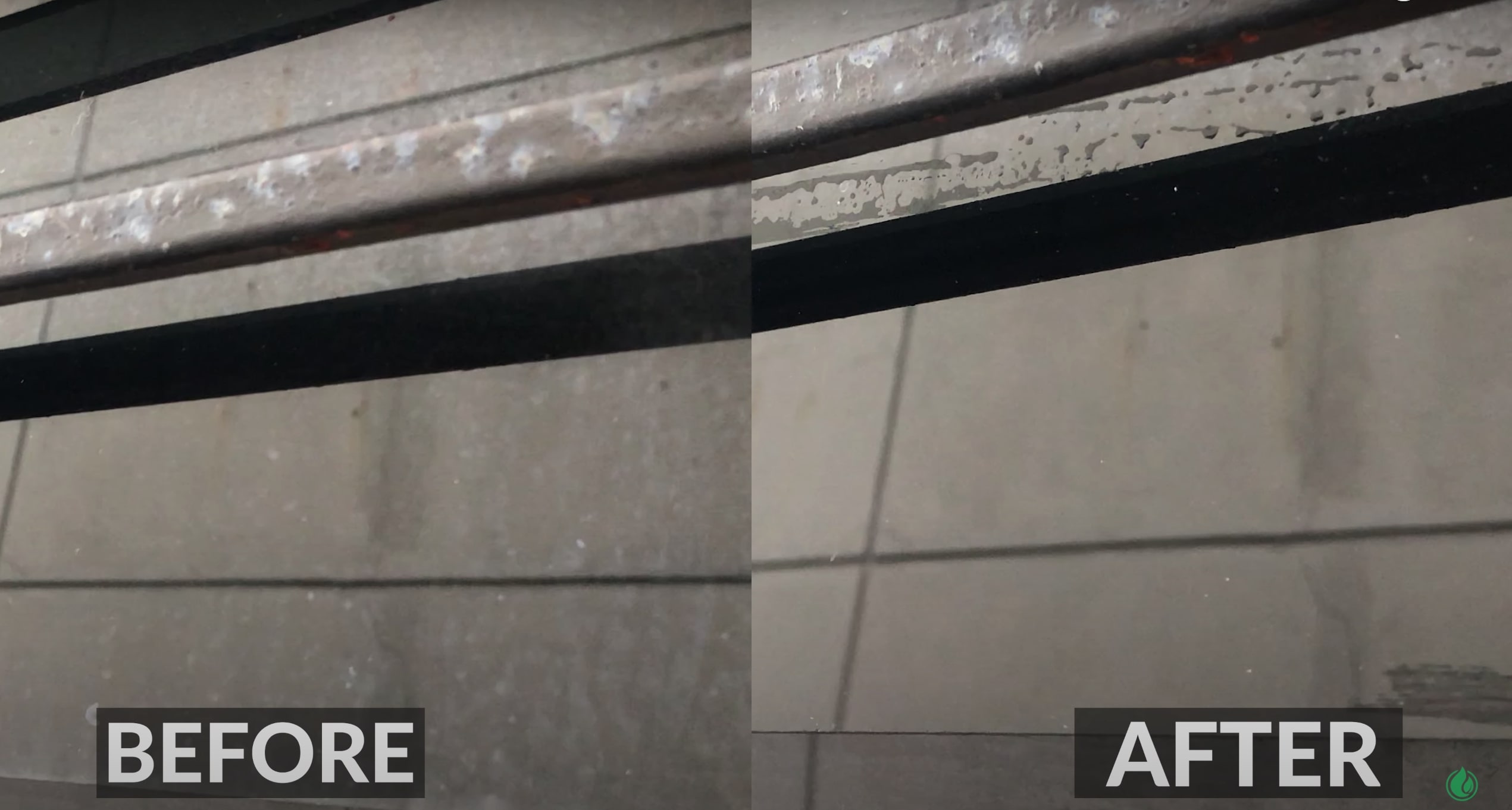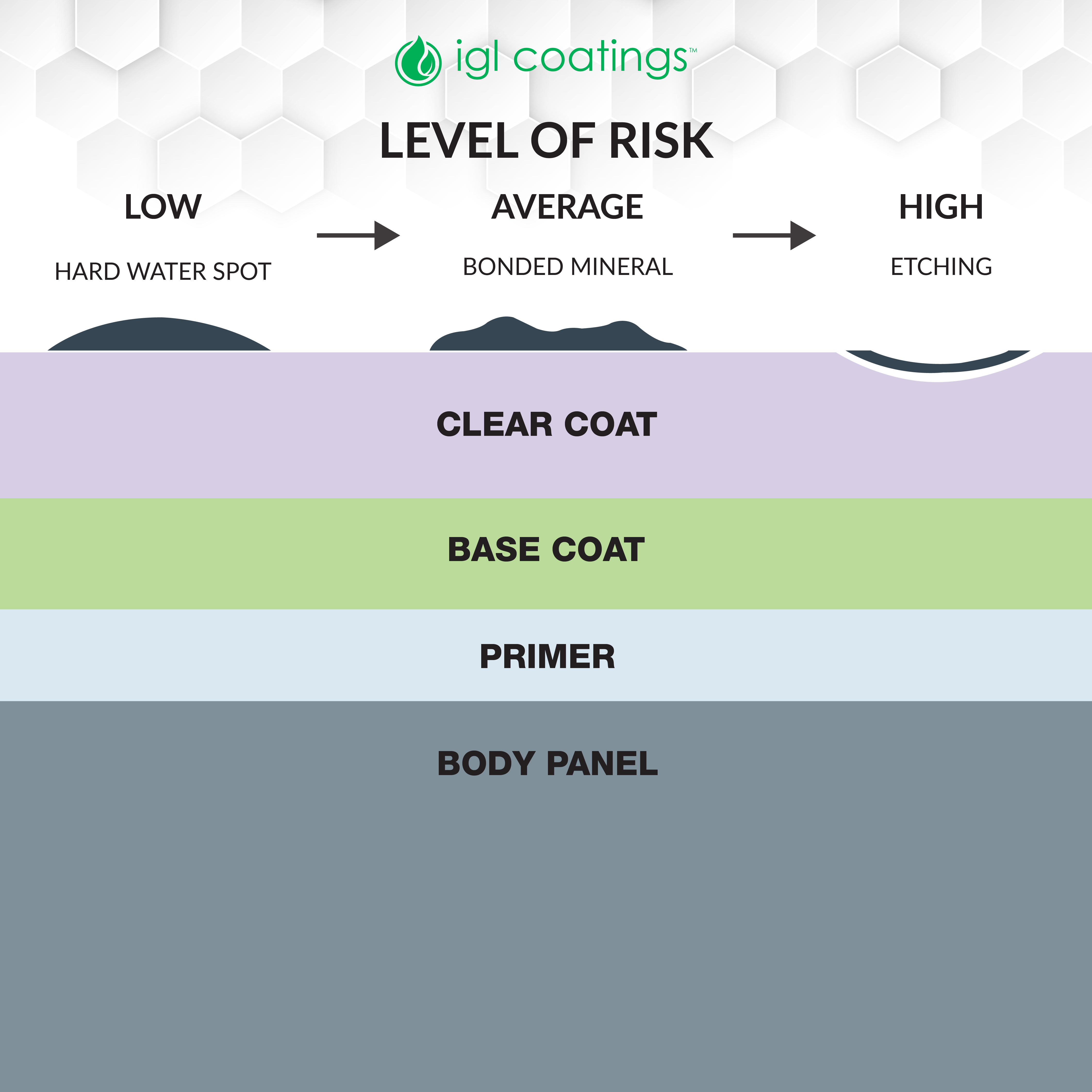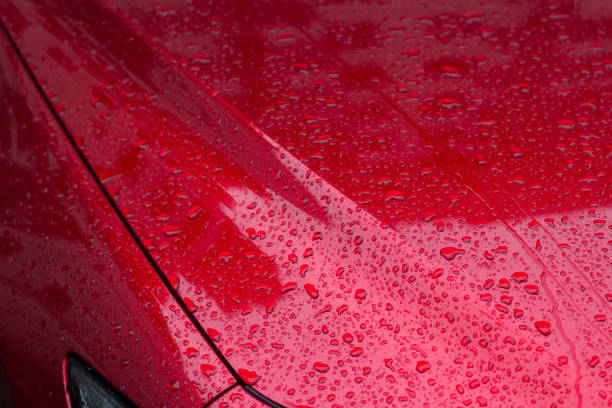“How are there water spots on my car? I take care of my car every day.”
Ah, water spots – why do we emphasize it way too much? Simply because they are small but a progressively damaging problem. If you drive your vehicle daily, the chances of having water spots on them are high. Ignoring these spots will only increase the risk of more damage on the surface. What are water spots, really? How do they form? How do we identify them? What causes water spots? Will water spots damage or scar my car? Let’s discuss!

Let’s get down to what creates water spots.
Water spots are traces of salts, minerals & acids that are dissolved in water that eventually, settles on the surface of your car. These small ringed white stains occur as the water evaporates and dries naturally leaving behind only mineral deposits. Mineral deposits? Yes! And that’s precisely why it’s important to protect your car with a great ceramic coating.
Why ceramic coatings? Do they prevent water spots?
Ceramic coatings are superhydrophobic creating tighter and more beads! Wait! But isn’t this what causes water spots? Precisely. Ceramic coatings with a low slip angle mean that these beads stay on longer, which creates more water spots if they are not taken off. High slip angles get better “roll-offs”. Unfortunately, not all ceramic coatings are equal. It’s not just hydrophobicity or high gloss, slip angles are also important, especially for the “roll-off” effects!

However, mineral deposits are easier to clean off (if not left for very long). If mineral deposits have been left for a long time, they will start to etch on the surface (we talk more about this later). The ceramic coating will act as the sacrificial layer, protecting the clear coat and OEM paint from etching. But we always recommend removing water spots as soon as you ‘spot’ them!
Mineral deposits and why they are left behind.
Mineral deposits are solids that are “left behind” as they don’t evaporate as liquids do. A water bead has less water present on the edges, causing evaporation to occur faster. Here’s the fascinating part, the remaining water decides to protect the water bead by running to the mentioned, edges. In this process, the minerals will follow along due to the rush of the water. Thus, begins the accumulation of mineral deposits. Once the water has dried, the UV rays further ensure the residue to be bonded with the paint. Isn’t science fascinating? *dreamy eyes*
Just like every problem, it can be easily resolved when detected early especially with the right product. But if we decide to turn a blind eye, well, it might just be an unsightly affair. Stubborn stains can definitely etch your clear coat and painted surface. We’ll get into that!

“Okay, but how do I know what kind of water spot is on the surface of my car?”
Unfortunately, water spots can be tough to detect – of course, this depends on the colour and condition of your vehicle. So, how do I know the severity of these water spots? No sweat fam, we got you:
- Hard water spots/Regular water spots
Yes, hard water – water with high mineral content! Cloudier compared to soft water, hard water contains more sodium and magnesium ions which can be difficult to clean with just soap. The source? – tap water. Rather than making the surface squeaky clean, it results in a ‘film’. This is due to the reaction of these ions with compounds such as stearates, producing insoluble stearate salts. Tap water is rich in minerals; and when you wash your car and leave it to air dry in the sun, hard water spots form. Sneaky little things aren’t they?
Let’s not forget, the “stereotypical & ultimate” romantic weather – rain! Naturally, rain has the ability to pick up some minerals from rocks and substances on the ground or lead to the formation of acid rain if you live close to a factory. Acid rain consists of sulphuric dioxide, carbon dioxide, and are a host of other minerals.
- Bonded mineral water spots
Bonded mineral water spots are a little more ‘dangerous’ as they have a higher concentration of minerals, which inevitably, will be a hassle to remove. These minerals can and will (if you leave them long enough) corrode the clear coat of your car. Well then, what’s the difference between hard water spots and bonded mineral water spots? Time; you have given the minerals an ample amount of time to bond to the surface.
- Etched-in water spots
The highest severity of all – etching! Let us be straight and upfront with you, etched-in water stains need LOTS of patience, and certain methods while may be tough on those stains, it is going to be tougher on your heart *cue melancholic music*. This type of water spot may look like a faded clear coat and is more prone to happen to older and more worn-out cars.

“Oh okay, how do you get rid of them?”
Right, so we’ve talked about what kinds of water spots are there, now it’s time to figure out how to get rid of them. Again, depending on the severity, the solutions can be different. Here’s how it goes:
Hard water spots: In the detailing community, these kinds of water spots are pretty common. We recommend getting your car cleaned by a professional and follow up maintenance with Ecoclean Jen K.O.! She’s a keeper!
Moving on to bonded mineral water spots: Often requires the leveling of the paint’s protective clear coat via the use of a hand-held rotary polishing tool and various cutting/polishing compounds. You can also a utilize specially formulated cleaner, that has a strong acidic mixture that softens the hard minerals that have been left off by the water such as acid rain or tap water on the surface: Ecoclean Delete! You can read further about how to remove water spots with Delete here.
Oh, the ultimate water spot removal: Since, they (etched-in water spots) cannot surpass the clear coat, these water spots can be eliminated with paint correction techniques. Get your cutting compounds like from the F series and get crackin’.
“How do I avoid them in the future?”
Washing it regularly would not help prevent the spots. What would matter is a soft microfiber drying towel. By removing the water beads, you remove the water spots! For tight corners, a blower might help to blow your troubles away! As ceramic coating experts, we would suggest you the best solution – get your vehicle coated with a reputable ceramic coating. It provides protection, ease of maintaining and also avoids unnecessary damage to your assets!
For tough water spots, try Ecoclean Delete. Its acid-based formula is used worldwide by professionals to easily remove tough water spots on ceramic coatings. Just remember to neutralise it!
For light water spots and stains, give Ecoclean Jen K.O. a go. Quickly dissolves light water spots and gives a great shine! Its added hydrophobic properties clean and removes water spots with just a spray!
Like what you read? Comment below and suggest to us some of your concerns, we might just write a piece on it! Visit www.iglcoatings.com, check us out on Facebook & Instagram, or email us at [email protected] for any further questions! We are waiting for ya!


